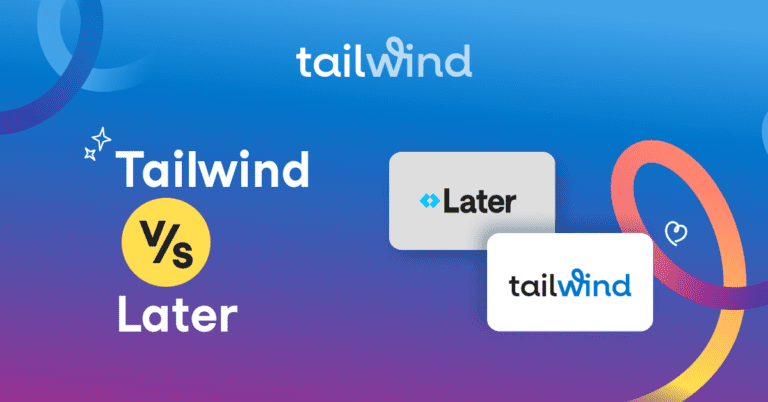
What is Social Media ROI?
Social media ROI is simply the return on investment (ROI) from one’s social media marketing expenses and activities. Such expenses and activities might include ads, strategic campaigns, a redesign of the website, updated social media bios, etc.
The return can be in the form of revenue, brand awareness, improved customer service, customer loyalty, and much more. At an ideological level, this type of ROI is how much value you receive from the investments you make into social media marketing.
While this may seem like a simple enough concept, obtaining and demonstrating a strong social media ROI is not overly straightforward.
In fact, as of September 1, 2021, a mere 15% of social media marketers were measuring social ROI, according to a Sprout Social Index. However, anyone who incorporates these practices is likely to be several steps ahead of the competition.
How to Calculate and Measure Social Media ROI: 5-Step Plan
1. Define your goals
To begin, it is essential to define your goals and your brand’s social media purpose. The purpose of social media is different for each company. It might even be different for each product or campaign. Some examples of a purpose are as follows:
- To make more money
- Raise brand awareness
- Community building
- Better address customer comments
- Enhance customer experience and loyalty
For goals, make sure they are actionable, measurable, and realistic. Such goals should also be specific to each campaign and in coordination with establishing goals for social media ROI in general.
Do not forget that goals should also be in line with overall business goals and overall marketing goals. By defining your goals in a specific manner, it will be easier when it comes time to calculate your ROI.
To define your goals, be sure to decide what you want to get out of your campaign. Keep in mind that setting goals is not a one-size-fits-all approach. What is right for your brand may not be realistic for another. The same is true for each campaign. The following are some goals to consider:
- Raise brand awareness
- Gain followers
- Audience engagement
- Signups for newsletter
- Time spent on a page
- Leads generated
- Clicks on a link
- Purchases
- Downloads
In the end, goals should be based on measurable actions that can be monitored. This will help to demonstrate and present the value of your efforts to decision-makers.
2. Measure your progress
Establish metrics to be able to calculate social media ROI. Marketing metrics are a way to track the performance and outcome of a campaign to determine its effectiveness. Before you begin tracking metrics, do not forget to benchmark your ROI for paid social media initiatives. This can be done by measuring the ROI of existing social media marketing efforts prior to launching new campaigns or tactics.
And create a specific period of time to measure, such as the first two weeks or specific dates. LinkedIn research revealed that 77% of marketing individuals measured results during the first month of any campaign despite sales cycles being longer in many instances. The way many organizations and individuals measure progress with metrics is by tracking websites and social media.
On a website, you can use Google analytics to determine social media traffic and which platforms bring in such traffic. For social media, each platform, such as Twitter and Instagram, offers an analytics tool to track interactions and engagements with your audience.
You can keep track of new followers over a specific period of time, how many people save a post, etc. Each metric gathered can help improve the effectiveness of a campaign as well as the overall marketing strategy.
3. Assign a monetary value to your results
To be able to prove that social media investments are worth the time and money, it will be critical to assign a monetary value to your results. One option is to calculate the lifetime value, or the amount you earn from a customer on average. A formula is often applied to determine the potential value of each visit from a customer.
This formula is the lifetime value x the conversion rate. For example, you might take the lifetime value and multiply that by the average number of email subscribers who become customers to find the real potential value of a customer visit.
Another monetary value can be assigned as the average sale. If the goal of your campaign is to try to get sales, then you’ll want to calculate your average sale amount and set that as the value.
In this case, your destination page would have to be the page that shows up after a customer completes a purchase. When returns are achieved organically, see how much it would have cost to generate those same returns with ads. The monetary value will be the amount you save.
4. Track your investment
Another component to determine the ROI of social media is to track your investments. The type of investments will vary by campaign. This might include:
- Advertising costs
- Cost of each employee’s hours spent working on the campaign
- Expense of hiring someone to write content or social media posts
- Fees for social media tools, like social media management software
It is important that these expenses are weighted. This means that if you use social media tools all year, only include the charges from the weeks or months of the campaign’s duration. And be sure to separate paid and organic social media tracking.
5. Calculate your social media ROI
Now that you have all the information and tools to figure out your social media ROI, it is time to calculate. You will need to have profit and investment per campaign at the ready. Profit is the money you earned from, the value of, etc., various social media marketing efforts.
Whereas, investment is the total cost of social media marketing efforts. The following is the social media ROI formula:
The actual calculation → (Profit-investment/investment) x100 = ROI %
And, in the end, you must be able to showcase ROI in an easily digestible report for decision-makers and team members who may not fully grasp social media ROI. You want these reports to follow a basic template.
They should use plain language void of jargon and acronyms. Include results that relate to relevant business objectives. Use KPIs to track progress in the short term. And clearly express any limitations and aspects that you can and can’t measure.
4 Tips for Maximizing Social Media ROI
These tips can help maximize social media ROI!
- If you are unsure whether a campaign is right, consider a test campaign. Experiment with different platforms, ad formats, and target audiences. Once you determine which aspects work best, you can launch a full-scale campaign with greater results.
- For any campaign, always keep goals in mind during the development and execution stages. It is critical to consider all goals, including the business goals, marketing goals, and campaign goals. You may have to reevaluate mid-campaign to remain aligned with ROI goals.
- Look at the data with great frequency. Take advantage of the tools you have to track and monitor data. Evaluate data from a micro and macro perspective, or rather in great detail and from a broader viewpoint.
And, do not forget to use the many helpful social media marketing tools that exist. Tailwind has scheduling tools, analytics, and even Tailwind Create to help you make sure your campaign is a success! Check out Tailwind’s free trial to start getting the most value possible from your social media investment!





